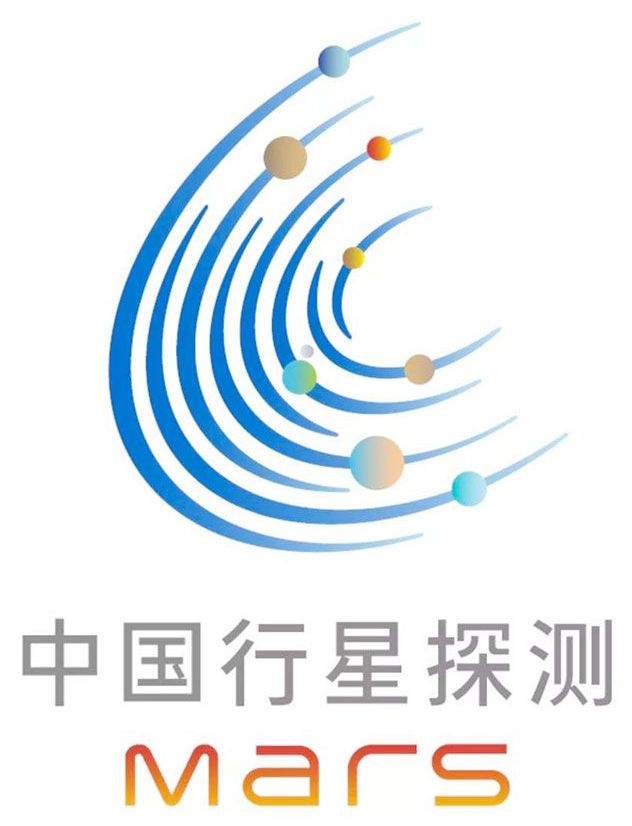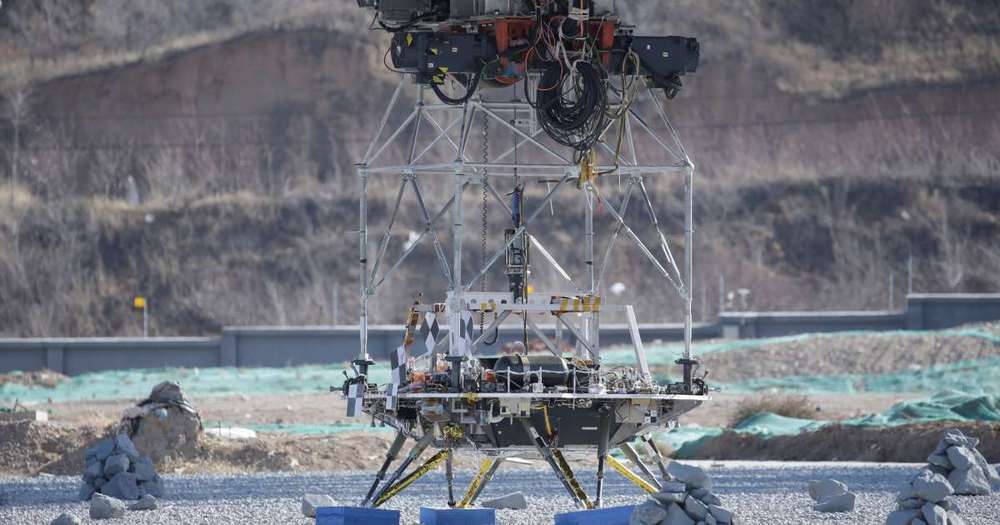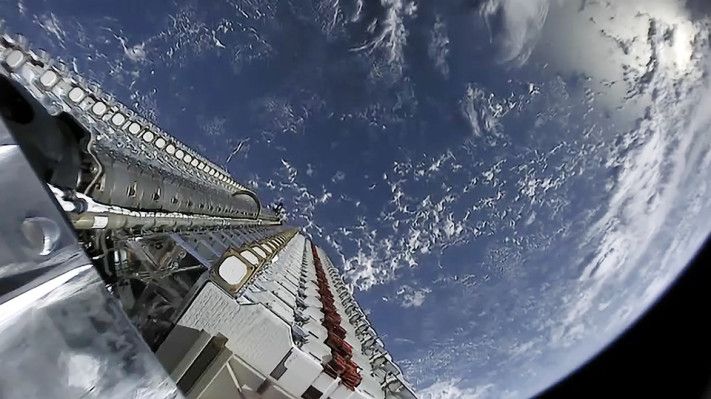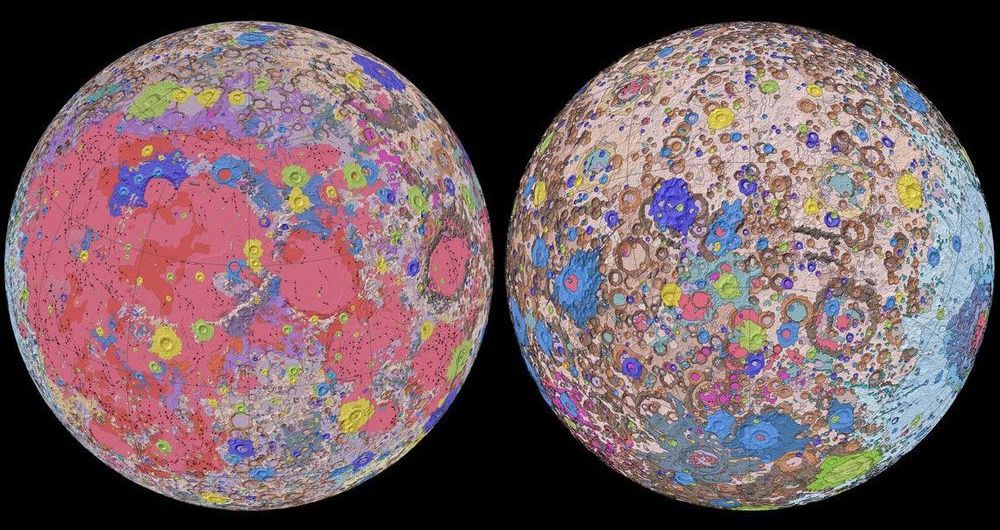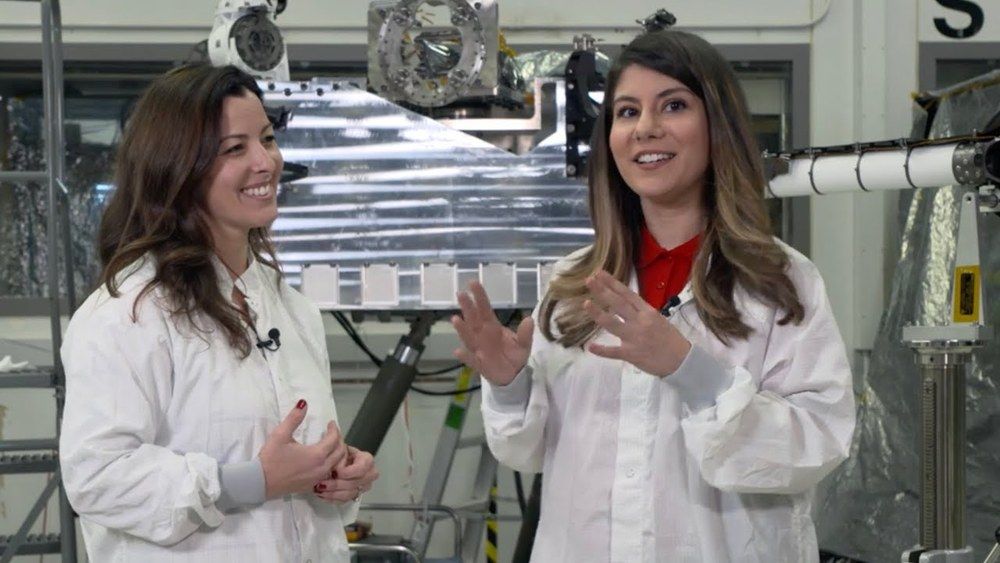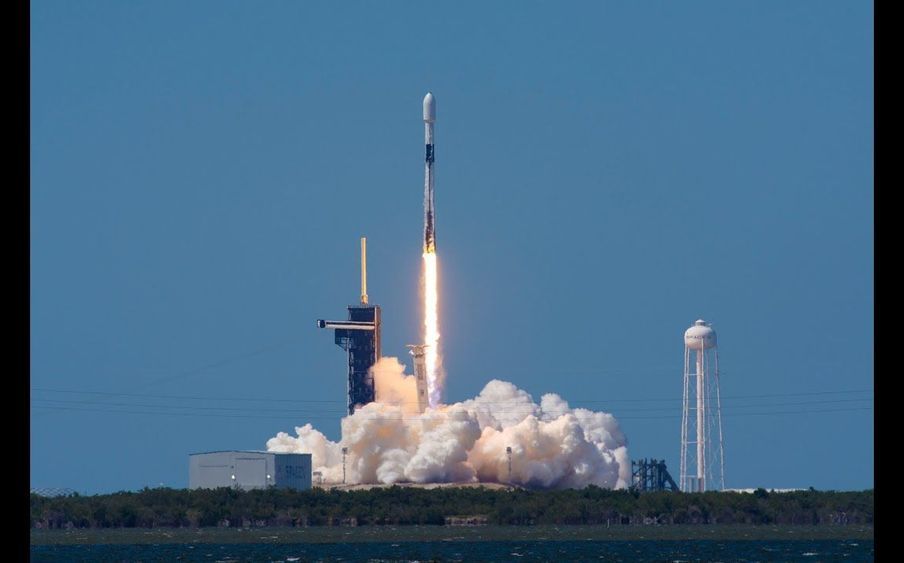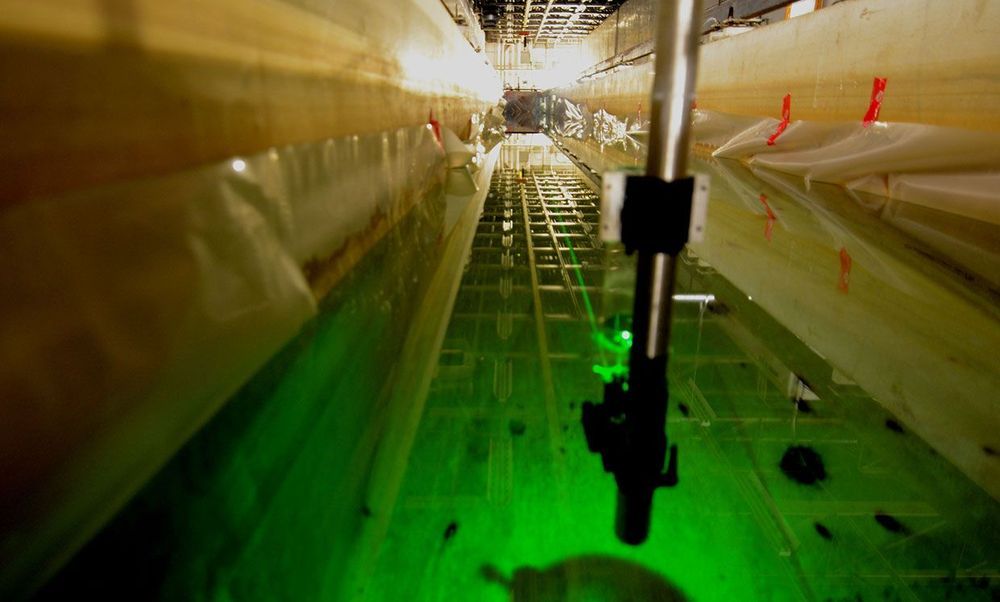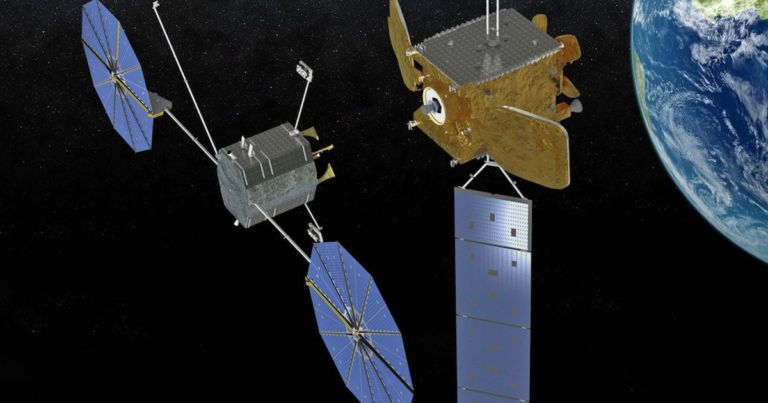Elon Musk says SpaceX’s ambitious Starlink satellite internet setup has made great steps toward providing good internet to previously low-priority locations. Musk’s Starlink plan accounts for an eventual 40,000 satellites in orbit to blanket the globe in internet coverage, far surpassing any existing satellite internet service.
Category: satellites
— China revealed the name and logo for its first mission aimed at landing on the planet Mars to mark the 50th anniversary of its first satellite launch.
Celebrating the country’s Space Day on Friday (April 24), the China National Space Administration (CNSA) announced that its upcoming robotic mission to the Red Planet will be named “Tianwen-1.” The name, borrowed from an ancient Chinese verse by poet Qu Yuan, translates to “questions about the heavens.”
“In ‘Tianwen,’ Qu Yuan raised a series of questions in verse involving the sky, stars, natural phenomena, myths and the real world, showing his doubts about some traditional concepts and the spirit of seeking the truth,” reported the state-run Chinese news service Xinhua.
BEIJING (Reuters) — China’s space agency on Friday unveiled the name of its first Mars exploration mission, coinciding with China’s annual Space Day and the 50th anniversary of the launch of its first satellite.
SpaceX CEO and founder Elon Musk has shared more details about when in 2020 we can expect the company’s Starlink low-latency, high-bandwidth satellite internet service to actually be available to customers. He said on Twitter that a private beta for Starlink would begin in around three months, with a public beta to kick off roughly three months after that.
The initial beta test will apply to those located in “high latitudes,” Musk added. To date, SpaceX has said that Starlink service will initially be made available to customers in Canada and in the northern United States in 2020, with additional service expansion to follow to other parts of the world throughout 2021. On Twitter in response to a question about whether Germany counts as “high latitude,” Musk said that it does, indicating beta service at least may be available in more markets than the U.S. and Canada ahead of next year.
Late last year, Musk tweeted saying he was using a Starlink satellite connection to do so, and since then the company has launched six batches of 60 satellites each to build out its network. The small satellites work by flying around the Earth in low orbit, passing off connection between one another to ensure consistent service is provided to ground stations. They orbit lower than geostationary communications satellites, which provides latency and speed benefits, but don’t remain in a fixed position so a large number of them are required to provide consistent connectivity.
Drawing on data from satellites and Apollo-era missions, scientists at the US Geological Survey (USGS), NASA and the Lunar Planetary Institute have pieced together what they say is the first comprehensive geological map of the Moon.
Our 4.5-billion-year-old satellite is adorned with all kinds of rocks, craters and other interesting geological features. To dig into the details, the scientists looked to regional maps from six Apollo missions and combined these with modern data from recent satellite missions.
Refreshing the historical maps with fresh scientific observations enabled the scientists to put together an incredibly detailed perspective of the Moon, showing its geology at a scale of 1:5,000,000.
After years of studies, test-firings and a survey of U.S. industry in preparation for launch of a Mars Sample Return mission in 2026, NASA has settled on a solid-fueled design for a miniature rocket with a first-of-its-kind purpose: Launching a payload from Mars for a trip back to Earth.
The small launcher is called a Mars Ascent Vehicle, or MAV. The MAV will play a key role in the Mars Sample Return mission being developed by NASA and the European Space Agency.
The first element of the Mars Sample Return mission is NASA’s Perseverance rover scheduled to depart Earth in mid-July. Perseverance will collect core samples from Martian rocks and store them in tubes for retrieval by a future rover that could launch as soon as 2026.
SpaceX is targeting Wednesday, April 22 at 3:30 p.m. EDT, or 19:30 p.m. UTC, for its seventh launch of Starlink satellites. Falcon 9 will lift off from Launch Complex 39A (LC-39A) at NASA’s Kennedy Space Center in Florida. A backup opportunity is available on Thursday, April 23 at 3:15 p.m. EDT, or 19:15 UTC.
Falcon 9’s first stage previously supported Crew Dragon’s first flight to the International Space Station, launch of the RADARSAT Constellation Mission, and the fourth Starlink mission. Following stage separation, SpaceX will land Falcon 9’s first stage on the “Of Course I Still Love You” droneship, which will be stationed in the Atlantic Ocean. Falcon 9’s fairing previously supported the AMOS-17 mission.
Dengue case predictor mapping system wins the 2019 NASA global hackathon
Posted in astronomy, big data, computing, disruptive technology, environmental, events, hacking, information science, innovation, machine learning, mapping, open source, satellites, science, software, space | Leave a Comment on Dengue case predictor mapping system wins the 2019 NASA global hackathon
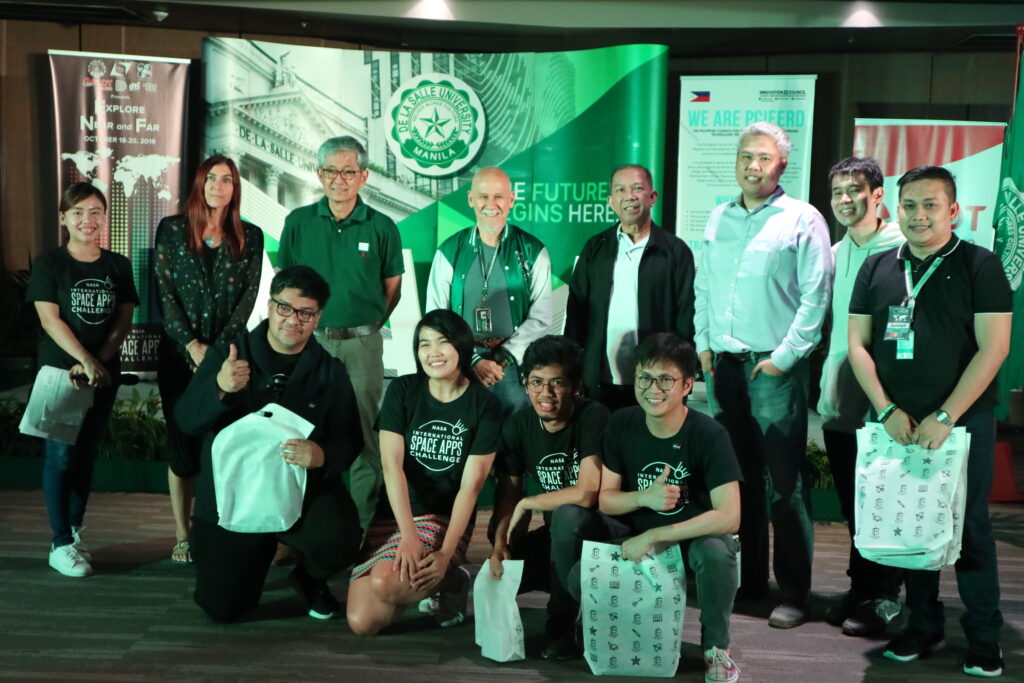
MANILA, Philippines — A dengue case forecasting system using space data made by Philippine developers won the 2019 National Aeronautics and Space Administration’s International Space Apps Challenge. Over 29,000 participating globally in 71 countries, this solution made it as one of the six winners in the best use of data, the solution that best makes space data accessible, or leverages it to a unique application.
Dengue fever is a viral, infectious tropical disease spread primarily by Aedes aegypti female mosquitoes. With 271,480 cases resulting in 1,107 deaths reported from January 1 to August 31, 2019 by the World Health Organization, Dominic Vincent D. Ligot, Mark Toledo, Frances Claire Tayco, and Jansen Dumaliang Lopez from CirroLytix developed a forecasting model of dengue cases using climate and digital data, and pinpointing possible hotspots from satellite data.

Correlating information from Sentinel-2 Copernicus and Landsat 8 satellites, climate data from the Philippine Atmospheric, Geophysical and Astronomical Services Administration of the Department of Science and Technology (DOST-PAGASA) and trends from Google search engines, potential dengue hotspots will be shown in a web interface.
Using satellite spectral bands like green, red, and near-infrared (NIR), indices like Fraction of Absorbed Photosynthetically Active Radiation (FAPAR) and Normalized Difference Vegetation Index (NDVI) are calculated in identifying areas with green vegetation while Normalized Difference Water Index (NDWI) identifies areas with water. Combining these indices reveal potential areas of stagnant water capable of being breeding grounds for mosquitoes, extracted as coordinates through a free and open-source cross-platform desktop geographic information system QGIS.
https://www.youtube.com/watch?v=uzpI775XoY0
Check out the website here: http://aedesproject.org/
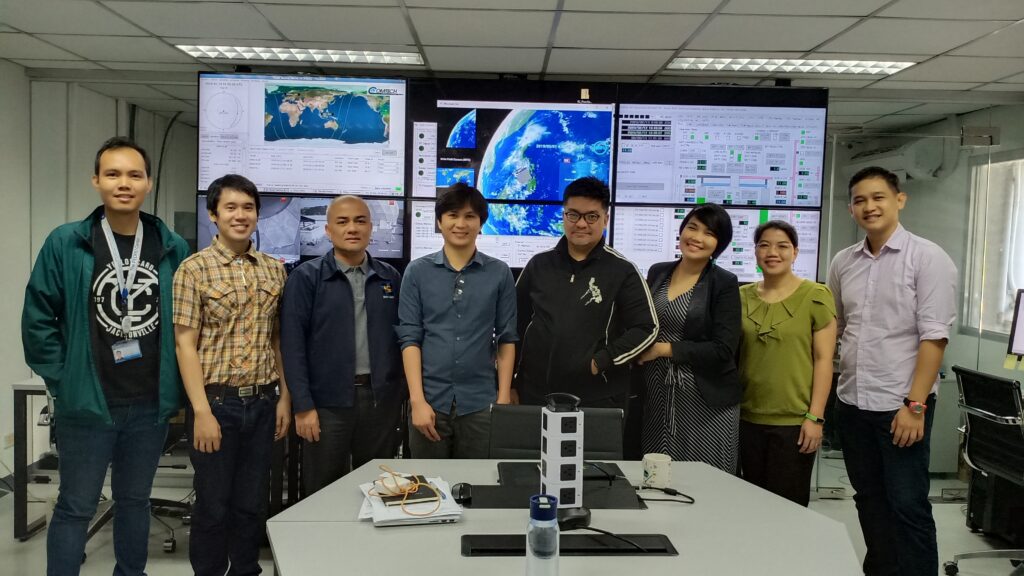
“AEDES aims to improve public health response against dengue fever in the Philippines by pinpointing possible hotspots using Earth observations,” Dr. Argyro Kavvada of NASA Earth Science and Booz Allen Hamilton explained.
The DOST-Philippine Council for Industry, Energy and Emerging Technology Research and Development (DOST-PCIEERD) deputy executive director Engr. Raul C. Sabularse said that the winning solution “benefits the community especially those countries suffering from malaria and dengue, just like the Philippines. I think it has a global impact. This is the new science to know the potential areas where dengue might occur. It is a good app.”
“It is very relevant to the Philippines and other countries which usually having problems with dengue. The team was able to show that it’s not really difficult to have all the data you need and integrate all of them and make them accessible to everyone for them to be able to use it. It’s a working model,” according to Monchito B. Ibrahim, industry development committee chairman of the Analytics Association of the Philippines and former undersecretary of the Department of Information and Communications Technology.
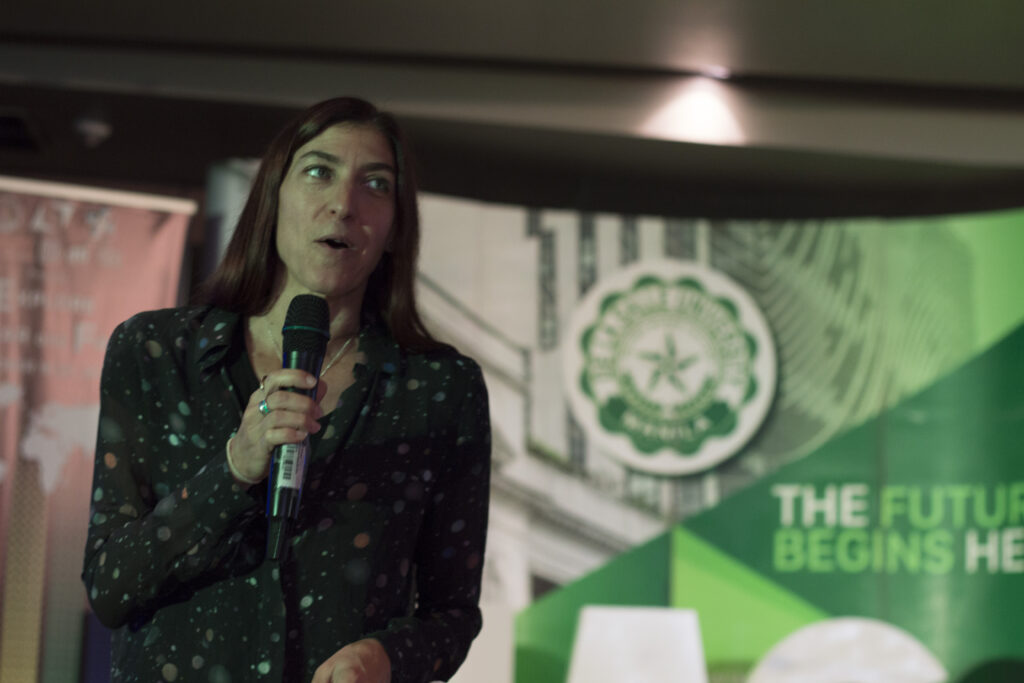
The leader of the Space Apps global organizing team Dr. Paula S. Bontempi, acting deputy director of the Earth Science Mission, NASA’s Science Mission Directorate remembers the pitch of the winning team when she led the hackathon in Manila. “They were terrific. Well deserved!” she said.
“I am very happy we landed in the winning circle. This would be a big help particularly in addressing our health-related problems. One of the Sustainable Development Goals (SDGs) is on Good Health and Well Being and the problem they are trying to address is analysis related to dengue,“ said Science and Technology secretary Fortunato T. de la Peña. Rex Lor from the United Nations Development Programme (UNDP) in the Philippines explained that the winning solution showcases the “pivotal role of cutting-edge digital technologies in the creation of strategies for sustainable development in the face of evolving development issues.”
U.S Public Affairs counselor Philip W. Roskamp and PLDT Enterprise Core Business Solutions vice president and head Joseph Ian G. Gendrano congratulates the next group of Pinoy winners.
Sec. de la Peña is also very happy on this second time victory for the Philippines on the global competition of NASA. The first winning solution ISDApp uses “data analysis, particularly NASA data, to be able to help our fishermen make decisions on when is the best time to catch fish.” It is currently being incubated by Animo Labs, the technology business incubator and Fab Lab of De La Salle University in partnership with DOST-PCIEERD. Project AEDES will be incubated by Animo Labs too.
University president Br. Raymundo B. Suplido FSC hopes that NASA Space Apps would “encourage our young Filipino researchers and scientists to create ideas and startups based on space science and technology, and pave the way for the promotion and awareness of the programs of our own Philippine space agency.”
Philippine vice president Leni Robredo recognized Space Apps as a platform “where some of our country’s brightest minds can collaborate in finding and creating solutions to our most pressing problems, not just in space, but more importantly here on Earth.”
“Space Apps is a community of scientists and engineers, artists and hackers coming together to address key issues here on Earth. At the heart of Space Apps are data that come to us from spacecraft flying around Earth and are looking at our world,” explained by Dr. Thomas Zurbuchen, NASA associate administrator for science.
“Personally, I’m more interested in supporting the startups that are coming out of the Space Apps Challenge,” according to DOST-PCIEERD executive director Dr. Enrico C. Paringit.
In the Philippines, Space Apps is a NASA-led initiative organized in collaboration with De La Salle University, Animo Labs, DOST-PCIEERD, PLDT InnoLab, American Corner Manila, U.S. Embassy, software developer Michael Lance M. Domagas, and celebrates the Design Week Philippines with the Design Center of the Philippines of the Department of Trade and Industry. It is globally organized by Booz Allen Hamilton, Mindgrub, and SecondMuse.
Space Apps is a NASA incubator innovation program. The next hackathon will be on October 2–4, 2020.
#SpaceApps #SpaceAppsPH
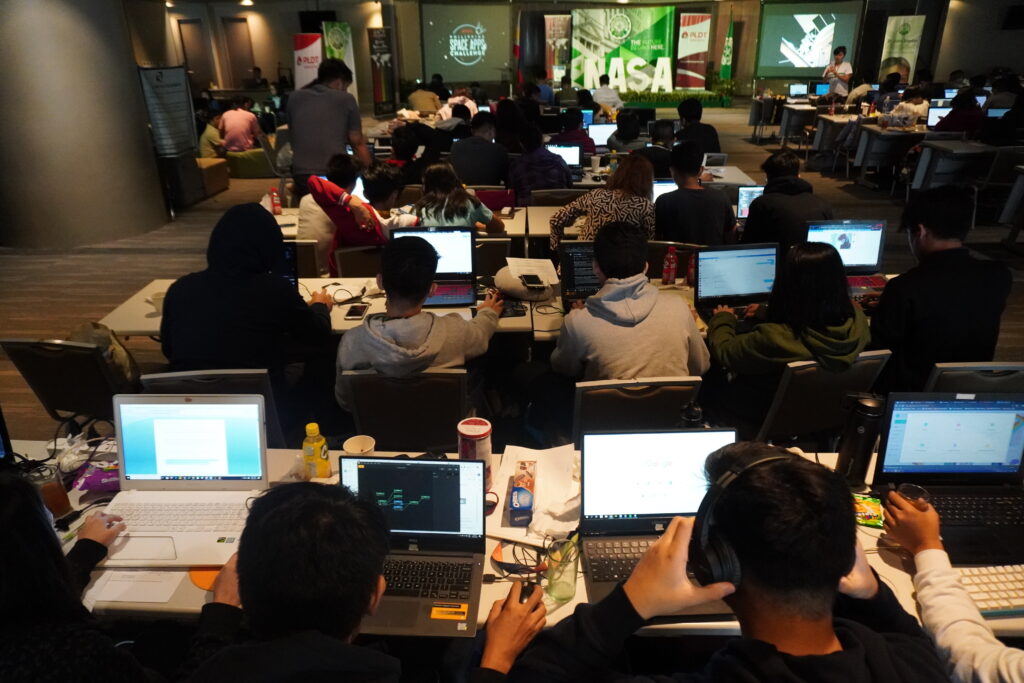
:oooo.
Underwater quantum links are possible across 30 meters (100 feet) of turbulent water, scientists have shown. Such findings could help to one day secure quantum communications for submarines.
Quantum cryptography exploits the quantum properties of particles such as photons to help encrypt and decrypt messages in a theoretically unhackable way. Scientists worldwide are now endeavoring to develop satellite-based quantum communications networks for a global real-time quantum Internet.
In addition to beaming quantum communications signals across the air, through a vacuum, and within fiber optic cables, researchers have investigated establishing quantum communications links through water. Such work could lead to secure quantum communications between submarines and surface vessels, and with other subs, aircraft, or even satellites.

